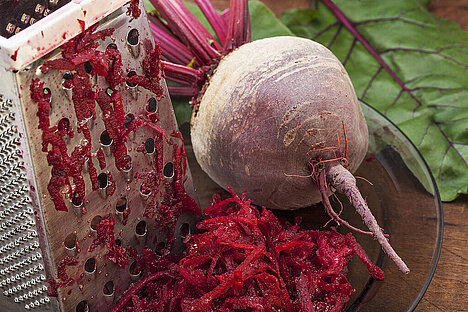Oxalic acid

What is oxalic acid?
Oxalic acid is a natural substance that serves as a defense against predators in many plants. Together with minerals such as calcium or iron, it forms insoluble salts known as oxalates. These can build up in the body and lead to kidney stones or anemia.
Which vegetables contain oxalic acid?
Oxalic acid is found in almost all types of vegetables, but in varying quantities. The following vegetables have a particularly high oxalic acid content (in mg per 100 g):
- Swiss chard (650 mg)
- Rhubarb (450 mg)
- Spinach (440 mg)
- Beet (180 mg)
How does oxalic acid affect dogs?
Oxalic acid can have both positive and negative effects on dogs. On the one hand, it can prevent the absorption of harmful heavy metals such as lead or cadmium by binding and excreting them. In addition, oxalic vegetables such as beet can promote health thanks to their vitamins and antioxidants.
On the other hand, too much oxalic acid can put a strain on the kidneys and inhibit the absorption of important minerals such as calcium or iron. This can lead to weak bones or anemia. Dogs that are prone to kidney disease or bladder stones are particularly at risk.
How do I prepare oxalic vegetables correctly?
There are two ways to reduce the oxalic acid content in vegetables:
- Boil the vegetables and drain the cooking water. Boiling dissolves some of the oxalic acid in the water and removes it.
- Cook the vegetables with baking soda. Baking soda is a baking powder that neutralizes the oxalic acid and renders it harmless. You can add 1-2 pinches of baking soda to the cooking water.
How much oxalic vegetables can my dog eat?
There is no exact recommendation as to how much oxalic vegetables your dog can eat. It depends on various factors, such as your dog's state of health, weight and other nutrition. As a rule of thumb, the less oxalic acid the vegetables contain, the more your dog can eat.
In general, you should only use vegetables containing oxalic acid as a side dish and not as the main ingredient in their food. You should also always prepare them well and combine them with a variety of other vegetables. This way you can benefit from the advantages of oxalic acid and avoid the disadvantages.
Oxalic acid is a natural substance in plants that forms insoluble salts with minerals and can lead to problems such as kidney stones in the body. Vegetables such as chard, rhubarb, spinach and beet have high oxalic acid levels. For dogs, oxalic acid can have both positive (binding of heavy metals) and negative (kidney problems) effects. When preparing vegetables containing oxalic acid, they should be boiled and the water drained off or neutralized with baking soda. The amount of oxalic vegetables for dogs depends on their health and weight, but they should only be used as a side dish and not as the main part of the diet.
If you notice any signs of hypersensitivity or poisoning in your dog, you should see your vet immediately. We are not a substitute for a vet, but we try to be as accurate as possible. Every dog reacts differently and we recommend you get a second opinion or consult your vet if in doubt.
Stay healthy and take good care of your four-legged friend!😊